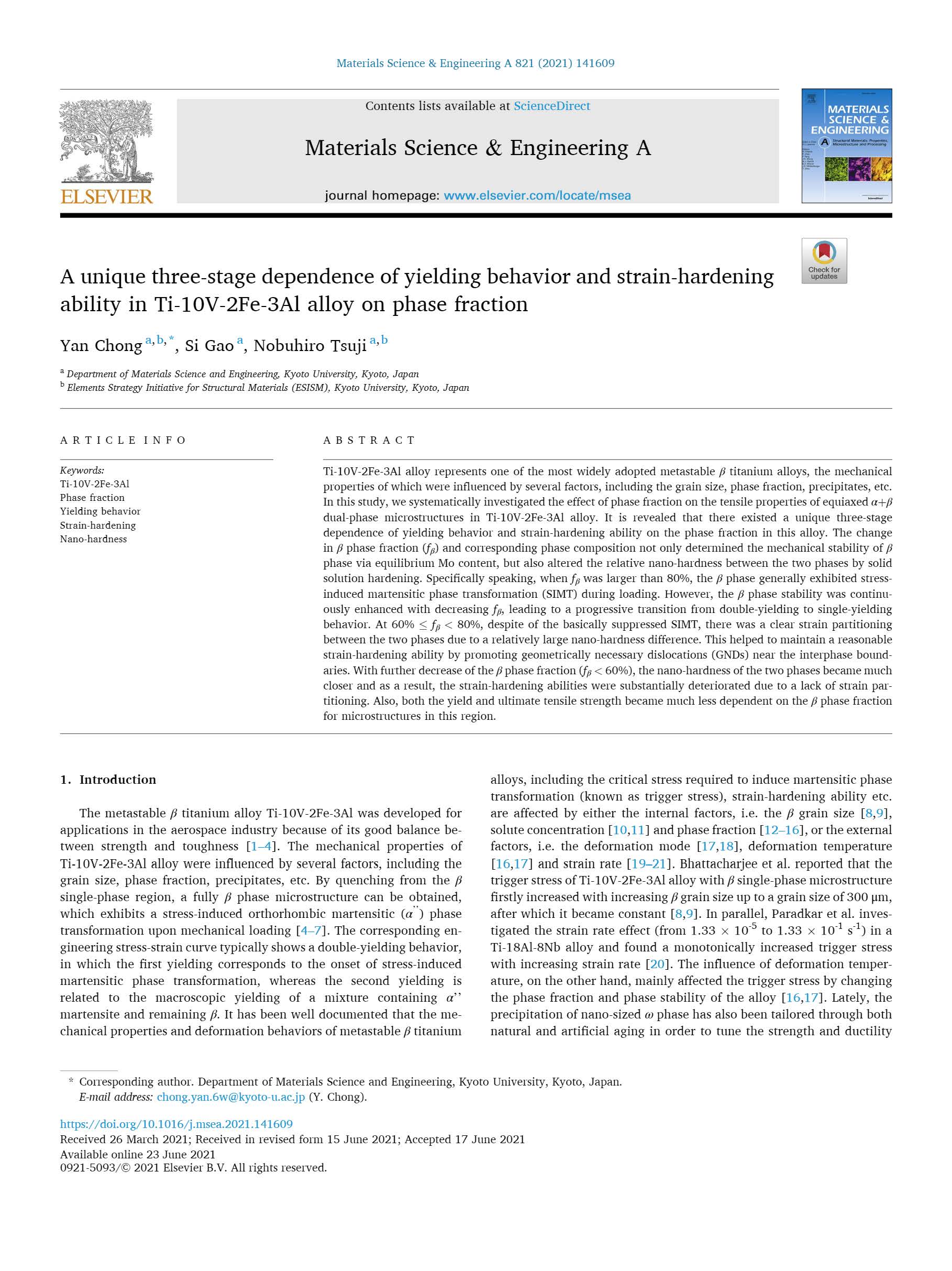A unique three-stage dependence of yielding behavior and strain-hardening ability in Ti-10V-2Fe-3Al alloy on phase fraction
Materials Science and Engneering A, 21 (2021), No.141609研究論文概要
Ti-10V-2Fe-3Al alloy represents one of the most widely adopted metastable β titanium alloys, the mechanical properties of which were influenced by several factors, including the grain size, phase fraction, precipitates, etc. In this study, we systematically investigated the effect of phase fraction on the tensile properties of equiaxed α+β dual-phase microstructures in Ti-10V-2Fe-3Al alloy. It is revealed that there existed a unique three-stage dependence of yielding behavior and strain-hardening ability on the phase fraction in this alloy. The change in β phase fraction (fβ) and corresponding phase composition not only determined the mechanical stability of β phase via equilibrium Mo content, but also altered the relative nano-hardness between the two phases by solid solution hardening. Specifically speaking, when fβ was larger than 80%, the β phase generally exhibited stress-induced martensitic phase transformation (SIMT) during loading. However, the β phase stability was continuously enhanced with decreasing fβ, leading to a progressive transition from double-yielding to single-yielding behavior. At 60% ≤ fβ < 80%, despite of the basically suppressed SIMT, there was a clear strain partitioning between the two phases due to a relatively large nano-hardness difference. This helped to maintain a reasonable strain-hardening ability by promoting geometrically necessary dislocations (GNDs) near the interphase boundaries. With further decrease of the β phase fraction (fβ < 60%), the nano-hardness of the two phases became much closer and as a result, the strain-hardening abilities were substantially deteriorated due to a lack of strain partitioning. Also, both the yield and ultimate tensile strength became much less dependent on the β phase fraction for microstructures in this region.
